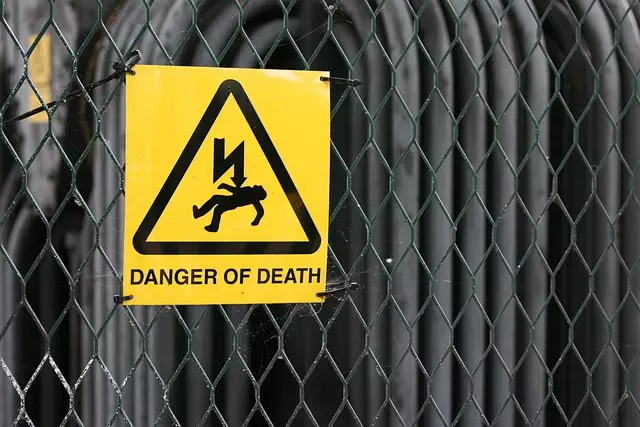Understanding dose-response relationships is industrial hygiene's cornerstone, connecting substance exposure (dose) to potential health harms (response). This knowledge enables hazard recognition and assessment, guiding the implementation of control measures like personal protective equipment (PPE), ventilation systems, and work practice adjustments. Exposure monitoring, facilitated by advanced techniques such as air quality tests and biomarker analysis, plays a critical role in evaluating these risks. By accurately measuring worker exposure to various substances, professionals can set meaningful exposure limits, detect at-risk workers, and prevent illnesses or injuries, fostering a culture of safety within industrial settings.
Dose-response relationships are fundamental to understanding how different levels of exposure to chemicals or hazards impact human health. This article delves into the critical concept of industrial hygiene, focusing on hazard recognition and assessment as key steps in identifying risks. We explore exposure monitoring techniques that enable accurate measurement of doses, facilitating effective risk evaluation. Furthermore, we present practical applications of dose-response data in occupational health settings, highlighting its significance for prevention and mitigation strategies.
- Understanding Dose-Response Relationships: A Foundation for Industrial Hygiene
- Hazard Recognition and Assessment: Unraveling the Link between Exposure and Health
- Exposure Monitoring Techniques: Measuring Doses for Effective Risk Evaluation
- Practical Applications: Using Dose-Response Data in Occupational Health Settings
Understanding Dose-Response Relationships: A Foundation for Industrial Hygiene
Understanding dose-response relationships is a cornerstone in the field of industrial hygiene. This concept links the amount or concentration of a substance (dose) to its potential harm (response), providing crucial insights for hazard recognition and assessment. By studying how different levels of exposure impact health, researchers and professionals can identify thresholds where risks become significant and take appropriate actions to mitigate them. In industrial settings, this knowledge is vital for implementing effective control measures and establishing safe working conditions.
Industrial hygiene practitioners utilize dose-response data to monitor and manage employee exposures. Exposure monitoring techniques measure the levels of hazardous substances in the air or on surfaces, allowing professionals to evaluate potential risks accurately. This information guides decisions regarding personal protective equipment (PPE), ventilation systems, and work practices designed to minimize worker exposure and prevent adverse health effects. Effective industrial hygiene programs rely on a solid understanding of dose-response relationships to ensure a safe and healthy workplace environment.
Hazard Recognition and Assessment: Unraveling the Link between Exposure and Health
In the realm of industrial hygiene, understanding dose-response relationships is paramount to unraveling the intricate link between exposure to various substances and potential health impacts. Hazard recognition and assessment play a pivotal role in this process by identifying and evaluating risks within working environments. By employing advanced exposure monitoring techniques, researchers and professionals can gain valuable insights into how different levels of chemical, physical, or biological agents affect human health. This involves meticulous data collection, including air quality tests, biomarker analysis, and detailed record-keeping, to establish a clear correlation between exposure dosages and corresponding health responses.
Such assessments are crucial for implementing effective control measures and ensuring worker safety. For instance, in industrial settings where hazardous materials are handled, regular monitoring can help identify excessive exposure levels, prompting the adoption of better engineering controls, personal protective equipment (PPE), or work practices to minimize risks. This proactive approach not only safeguards the well-being of workers but also fosters a culture of safety and productivity within organizations that prioritize industrial hygiene.
Exposure Monitoring Techniques: Measuring Doses for Effective Risk Evaluation
Exposure monitoring plays a pivotal role in understanding dose-response relationships within the context of industrial hygiene. Effective risk evaluation relies on accurate measurement of employee exposure to various substances, which is facilitated by advanced exposure monitoring techniques. These methods include personal protective equipment (PPE) sampling, air sampling using portable or fixed devices, and biological monitoring through urine or blood analysis. By collecting data on airborne concentration levels and personal exposure, professionals in hazard recognition and assessment can determine critical thresholds where health risks become apparent.
Such monitoring isn’t just a one-time endeavor; it’s an ongoing process crucial for implementing effective control measures. Regular exposure assessments enable the identification of at-risk workers, the recognition of new or changing hazards, and the verification of the success of implemented safety protocols. This continuous data collection is essential in dynamic industrial settings where factors like machinery changes, production processes evolve, and workplace conditions shift over time.
Practical Applications: Using Dose-Response Data in Occupational Health Settings
In occupational health settings, understanding dose-response relationships is paramount for ensuring worker safety and promoting industrial hygiene. Dose-response data helps in hazard recognition and assessment by providing insights into the potential health effects at various levels of exposure to hazardous substances. By analyzing how the response (e.g., toxicity) changes with increasing doses, professionals can set meaningful exposure limits and guidelines. This information is crucial for implementing effective control measures and personal protective equipment.
Moreover, dose-response data aids in exposure monitoring programs, enabling the measurement and evaluation of worker exposures over time. It allows health and safety professionals to identify trends, detect excessive exposures, and take corrective actions. This proactive approach to occupational health not only prevents illnesses and injuries but also fosters a culture of safety within industrial settings.


